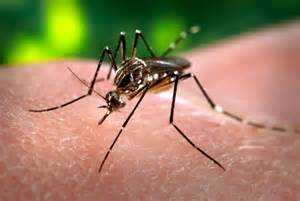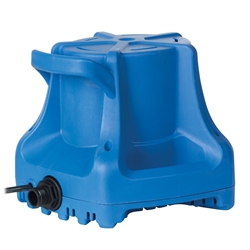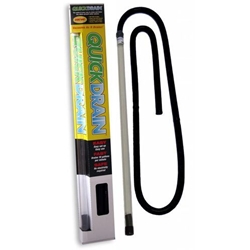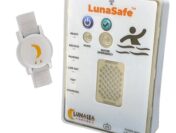Whether you have an in-ground or above-ground swimming pool, there are several important reasons for winterizing a pool each fall. The first is to protect the pool, pump, filter and pipes from damage due to freezing water. The second reason is that a properly closed and covered pool will be a lot easier to reopen in the spring. A third and equally important reason for winterizing and covering your pool is to keep mosquitos and bacteria out. There are so many diseases spread by the bite of an infected mosquito — including West Nile virus, Zika virus, dengue, and malaria — it makes sense to minimize the risk in your own backyard.
Keep Mosquitos Out with a Pool Cover and Pump
A pool cover is an essential part of winterizing a pool to keep the water in your pool clean and debris and mosquitos out. In places where winter temperatures rarely drop below 32 degrees, an uncovered pool creates a breeding ground for mosquitoes and bacteria.
In addition to covering your pool, use a pool cover pump to remove any standing water that results from rain and melting snow and will attract egg-laying insects. A dry pool cover won’t become a hotbed for infectious insects and germs. It will also maintain its integrity a lot longer.
There are two basic types of pool cover pumps: automatic and manual. Both types are compact and lightweight and attach easily to your garden hose in order to pump the water off the cover and away from your house, yard and pool.
Automatic Pool Cover Pumps
 Automatic pool cover pumps are electric and have an automatic on/off switch. When water is detected on the surface of the pool cover, the pump turns on automatically to remove the water. When the cover is dry, the pump turns itself off.
Automatic pool cover pumps are electric and have an automatic on/off switch. When water is detected on the surface of the pool cover, the pump turns on automatically to remove the water. When the cover is dry, the pump turns itself off.
Automatic pool cover pumps can pump anywhere from 250 to 2,500 gallons of water per hour (GPH). The larger the pool, the higher capacity pump is required. Many automatic pool cover pumps can be fully submerged in water and will collect leaves and debris from the cover in addition to pumping water.
Advantages of Automatic Pumps
- Higher capacity and faster pumping Required for in-ground pools and larger above-ground pools.
- Safer for homes with children and pets Eliminates puddles from accumulating on pool covers which are a potential drowning hazard.
- Continuous protection Removes heavy water before it can damage the pool cover and/or pull an unanchored cover into the pool.
Manual Pool Cover Pumps
 This type of pump needs to be physically turned off and on. Some manual pool cover pumps are hand-operated and use the power of water pressure to remove standing water, instead of electricity or batteries. Manual pool cover pumps drain about 200 GPH and are recommended for smaller above-ground pools or spas.
This type of pump needs to be physically turned off and on. Some manual pool cover pumps are hand-operated and use the power of water pressure to remove standing water, instead of electricity or batteries. Manual pool cover pumps drain about 200 GPH and are recommended for smaller above-ground pools or spas.
Advantages of Manual Pumps:
- Less expensive
- Lightweight and very portable
- Smaller size Good for most above-ground pool and spa covers; also useful for emptying spas and hot tubs.
How to Choose a Pool Cover Pump
Choose a pool cover pump based on the type and size of pool you have (above ground or in-ground). Manual pool cover pumps work well for homeowners who are diligent about pool maintenance chores, but for most everyone else, an automatic pool cover pump is the best choice. Regardless of which type you choose, a pool cover pump can serve double-duty and be used to pump water out of basements, boats, spas and other places with unwanted standing water.
Other Tips to Reduce Mosquito Breeding
Winterizing a pool with a pool cover and pool cover pump will prolong the lifespan of your solid winter pool cover and greatly reduce the chance it will become a breeding site for mosquitos. Use your pool cover pump to remove standing water and take time each week to scoop out leaves, branches and other organic matter. Allowing the cover to dry will also kill mosquito larvae.
For additional information on controlling mosquitos in your yard and garden, see these tips published by the CDC.




